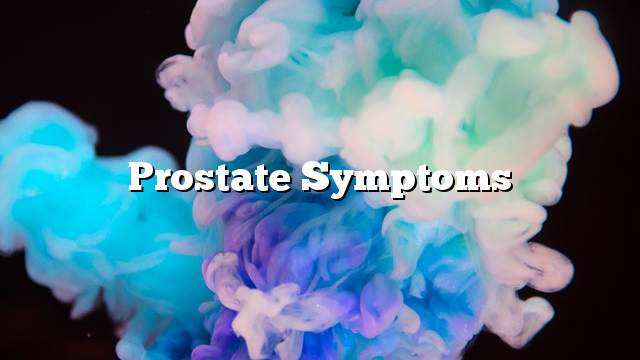What is a prostate?
The prostate is a male genital gland located below the abdomen and surrounding the urinary canal.
Function
1 * The prostate works on the secretion of semen in conjunction with the gland Cooper, which feeds the sperm.
- Surrounded by a network of veins called prostate gland is important in pushing blood to the genitals during erection.
Prostate secretions
The prostate secretes a mucous alkaline fluid that helps carry the sperm coming from the testicle.
Configured
The prostate is composed of two parts. The first is called the mandible, which lies inside and surrounds it and is permeated by the other part, consisting of fibrous fibrous tissue.
The prostate feeds many blood vessels and is surrounded by a network of veins called the prostate cluster.
Prostate diseases
Prostate diseases are divided into three:
A – Prostate congestion:
Begins with puberty or shortly after puberty due to increased secretion and flow of blood in the genital area with all sexual arousal and the absence of continuous discharge because most young people at that stage are unmarried.
Congestion in the genital area is accompanied by transparent excretions before or after urination. The pain of congestion is easily relieved when semen discharge occurs. Some types of anti-congestion drugs are present.
Some young people practice masturbation to get rid of congestion, but the best is to exercise and to get married.
There is a difference between prostate enlargement that affects the elderly and prostate infections affecting males at any stage of life after puberty; prostate infections are controversial in terms of symptoms and complications as well as the results of laboratory analysis to examine prostate secretion as well as the size of the gland. Some patients with prostate inflammation do not complain of any symptoms at all while the gland is in the case of chronic inflammation and others may complain of the symptoms of inflammation of the prostate at the time does not show laboratory tests any germs. The following should be mentioned:
- Some germs that invade the prostate can not be detected by regular laboratory tests, especially viruses.
- Some laboratories may show non-harmful bacteria that normally coexist with the gland without causing any disruption in their cells. As a result, the person may take antibiotics for a long time to no avail, in addition to the complications and damage caused by these antibiotics.
The prostate gland contains many vesicles that may be filled with pus, clogged the germs, germs are absorbed and filled with the pus, making it difficult to reach antibiotics. Active antibiotics are essential, with certain characteristics such as:
- Its ability to penetrate tissues.
- Arriving inflammation area.
- The extent to which antibiotics can be soluble in fats.
- Be base so that you can reach the prostate tissue with acidic juice.
This should be careful to take antibiotics without consulting the doctor and patience in the follow-up treatment.
B – prostatic hyperplasia:
Or benign prostatic hyperplasia, which affects men often after the age of fifty causes urination problems such as urination, urination, urination and urinary retention in some cases. The condition is diagnosed by ultrasound on the prostate as well as an analysis of the markers of tumors in the blood called prostate enlargement factor. There are several methods of treatment such as giving some medicines or thermal treatment or freezing treatment is the treatment of modern surgery in cases of extreme inflation.
T- Prostate tumors:
Usually tumors are malignant and common in men after the age of sixty and increase significantly after the age of eighty. The condition is diagnosed by ultrasound, CT and magnetic resonance imaging. The diagnosis is confirmed by some indications of tumors in the blood. The treatment methods are pharmacotherapy, chemotherapy, radiotherapy and prostatectomy.
